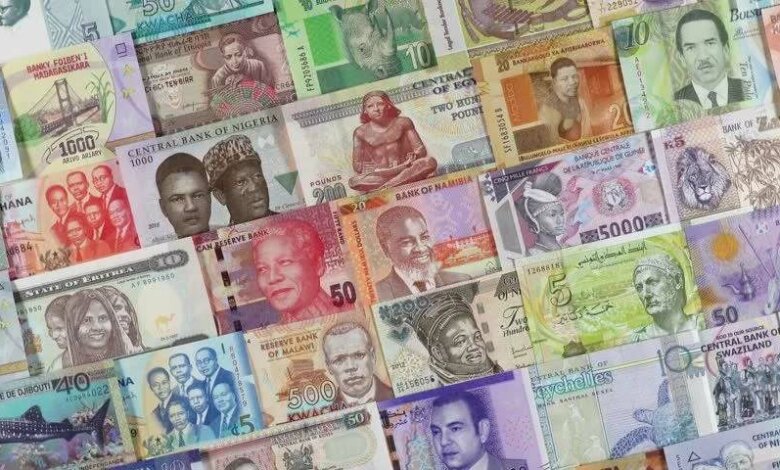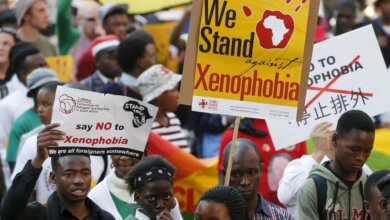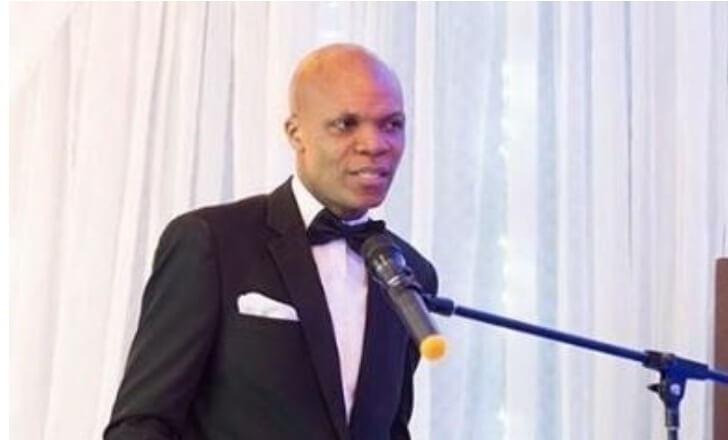Africa’s Way Out of Monetary Colonialism

Originally published by Mises Institute, and written by Manuel Tacanho
Africa has been plagued with rampant inflation and monetary instability over the past fifty years. There have been numerous cases of currency crises and currency resets. Even hyperinflation, the most destructive economic phenomenon, has left its ruinous mark on several African societies.
Some may say this is because African central banks are incompetent in managing their currencies. Others may claim, like the famous and infamous former governor of the central bank of Zimbabwe, Gideon Gono, that inflation is “correlated” with droughts or some other planetary phenomenon. Finally, more incognizant commentators may assert monetary instability is a “normal” feature of developing economies.
Those and similar views are outright incorrect. Africa has been afflicted by monetary instability, rampant inflation, and even hyperinflation because of fiat money regimes imposed by African governments under 48 Comments. An arrangement that amounts to monetary colonialism.
The Cause of Inflation and Economic Instability
The Bretton Woods agreement of 1944 established that the US dollar was to remain backed by gold, the anchor of monetary trust and stability, at $35 per ounce, and all other currencies would, in turn, be linked to the dollar. The suspension of convertibility of dollars to gold was “supposed” to be temporary, as declared by President Richard Nixon in 1971.
However, due to the rise of Keynesian economics coupled with governments’ insatiable appetite to spend more than they take through taxes, the US government found itself issuing, printing if you prefer, more dollars than it had gold to back up. This imbalance led key countries to demand the redemption of some of their dollar holdings in gold.
As pressure to redeem mounted, on August 15, 1971, President Nixon unilaterally ended the dollar’s (and thus the world’s currencies) last link to gold, the most stable form of money. He announced:
“I have directed Secretary Connally to suspend temporarily the convertibility of the dollar into gold or other reserve assets, except in amounts and conditions determined to be in the interest of monetary stability and the best interests of the United States.”
That was the final step in a long and government-orchestrated transition to fully fiat money that started with World War I. In essence, the fateful Nixon shock is how we, humanity, ended up shackled by fiat money regimes. And the instability, inflation, and more frequent crises result from it.
Read Also: Africa Still Prints its Money in Europe
For context, notice that in 1971, global affairs were shaped by the two superpowers of the time, the United States leading the “capitalist” bloc and the Union of Soviet Socialist Republics leading the communist bloc. Thus, the decolonization of Africa was taking place against the backdrop of the Cold War. Since the “capitalist” countries were the colonialists, many African liberation movements turned to communist countries for support. Which also meant ideological alliance.
Like almost all statist regimes, the Soviet Union, being a socialist dictatorship, rejected sound money in favor of fiat. So, after the Nixon shock, fiat money became the new normal in the West. For African countries, this meant that whether one was in the “capitalist” camp or the Communist bloc, the only monetary option was fiat currency—an inconvertible and unbacked currency of unlimited supply.
That said, African countries, though politically independent, remained economically and monetarily dependent on the West and the East. This also means African countries remained philosophically (economic thought) dependent on the West or the East. So, African countries live trapped in imported statist and inflationist economic concepts fueled by fiat money.
When the USSR collapsed in 1991, the United States became the sole (fiat) superpower. However, by this time, academic, government, and media circles in the “capitalist” West already were heavily bent on Keynesian/statist economics.
Keep in mind President Richard Nixon had declared in the early 1970s, “We are all Keynesians now.” From 1991 to the present, mainstream economics has become much more, not less, statist. Moreover, notice that statist economics and monetary inflation are eternally married. This is a crucial reason why statists of all persuasions prefer fiat money systems.
So, this means that 99 percent of Africans trained as economists in the West, in Africa, or elsewhere before and after 1991 are statist economists. Thus, proponents of fiat money and antagonist of sound money and monetary freedom. This further means that African leaders, politicians, and bureaucrats hold statist economic views. Hence, the insistence on state-led economic development despite this model’s evident failure to create developed and prosperous African societies over the past fifty years.
Such is the statist economic thought and inflationist monetary system context in which African countries gained “independence” and have lived. In other words, postcolonial African societies were conceived in monetary colonialism, (monetary/price) inflation, and consequently, economic instability.
Yet, despite the monetary chaos seen in Africa, rather than concede to the fact that fiat money systems are inherently inflationary and unreliable, like Mr. Gono, many central bankers, statist economists, and other proponents of fiat money will not hesitate to blame the hot weather, the cold weather, this or that for the ruinous consequences of today’s chaotic monetary system.
Africa under the Fiat Dollar Standard
How have African societies fared over the past fifty years under fiat money and monetary colonialism? It depends upon whom one asks. It has been fantastic and quite beneficial for African ruling elites and associates. However, it has been a nightmare of inflation, instability, and tyranny for the people.
Postcolonial Africa has been mired in monetary instability: currency crises, erratic devaluations, destabilizing fluctuations, high inflation, countless currency resets, and ruinous hyperinflations (e.g., Angola in the 1990s, Zimbabwe in the 2000s, among others). Even before high inflation became a global problem in 2021, Many African countries were already hyperinflationary. Yes, before the Russia-Ukraine war and the covid crisis. For example, five African countries are mentioned in Ernst and Young’s Hyperinflationary Economies, including Sudan, Zimbabwe (yes, again), South Sudan, Ethiopia, and Angola. Zambia could be considered hyperinflationary too.
Under the current fiat system, African economies remained monetarily disconnected. There exists a lamentable state of affairs that severely restricts and disincentivizes trade among Africans. This is odd and contrary to precolonial Africa’s free and essentially borderless trade history.
One example, if a Nigerian merchant wishes to buy Ghanaian supplies, she would have to first convert her cedis into US dollars and then to nairas, a process that is burdensome and costly. There is no direct currency exchange even between next-door neighbors like Nigeria and Cameroon. Angola and the Democratic Republic of the Congo. Egypt and Sudan, etc.
The government-managed fiat money system has been a nightmare for African societies with ruinous economic, social, cultural, and moral consequences. However, the tragedy of fiat in Africa does not end there. Under the France-controlled CFA franc currency arrangement, 14 African countries remain trapped in monetary colonialism which differs from the rest of the continent, which is under not-so-direct monetary colonialism.
Read Also: Book review — ‘Africa’s Last Colonial Currency – The CFA Franc Story’ by Pigeaud and Sylla
In “Fighting Monetary Colonialism With Open-Source Code,” human rights activist Alex Gladstein pointed out:
“As 1960 approached, decolonization seemed inevitable. Europe was united in disengaging from Africa after decades of depredations and state-sponsored looting. But the French authorities realized they could have their cake, and eat it too, by ceding political control while retaining monetary control. This legacy still stands today in 14 countries that speak French and use a currency controlled by Paris: Senegal, Mali, Ivory Coast, Guinea-Bissau, Togo, Benin, Burkina Faso, Niger, Cameroon, Chad, the Central African Republic, Gabon, Equatorial Guinea, the Republic of Congo and the Comoros. In 2021 the French still exert monetary control over more than 2.5 million square kilometers of African territory.”
The Way Out and Forward for Africa
African leaders can choose to:
Like many millions of self-loving Africans, I would argue that option 1 is unacceptable and intolerable. Monetary colonialism must come to an end.
Option 2 entails realizing a long-held pan-African vision. So, it is ideal. However, this would likely be an excruciatingly bureaucratic and thus long process given the political establishment’s fierce antagonism toward sound money. Besides the fact that this is a dream most Africans still dream of, further supporting this option is the fact that both artisanal and industrial gold production is increasing in Africa. However, this option could trigger NATO to unleash its terrifying planes to drop a whole lot of democracy across Africa.
Option 3 is to scrap legal tender laws and other repressive monetary laws entirely. Thereby, letting postcolonial Africans enjoy monetary freedom as precolonial Africans lived in monetary freedom (i.e., they freely traded with gold, silver, copper, salt, and cowry shells, among other commodities, as money).
This is the best, fastest, and most effective way out and past monetary colonialism. Given the predominance of statist economic thinking, this approach may seem radical, perhaps even outlandish, at least from the perspective of politicians and bureaucrats. Still, this is the fastest and most effective way out of monetary colonialism.
Option 4 is bureaucratic, costly, still repressive, and does not establish monetary freedom but may well be the compromising middle ground. African governments would pass legislation establishing a legal and regulatory framework with this approach. Therefore, allowing the use of cryptocurrency alongside fiat currencies.
This already is happening. The Central African Republic has enacted legislation that does just that and establishes Bitcoin as legal tender, to circulate along with the Central African CFA franc. Similarly, Tanzania’s President Samia Suluhu Hassan has directed the central bank to prepare the country for cryptocurrencies.
Read Also: Bitcoin is now an Official Currency in Central African Republic
Cryptocurrency adoption in Africa has been quiet but fast and furious. This trend highlights that Africans, who are young, tech savvy, and yearning for change, and are looking for ways to escape the problems of fiat money. Africa is a frontrunner in crypto adoption, boasting some of the highest crypto adoption rates worldwide, despite government antagonism.
Should African leaders stick with option 1, meaning fiat money and therefore the continuation of monetary colonialism, nature will do justice. Historical evidence unequivocally shows that fiat money regimes always and inevitably fail. The fiat dollar standard will not stand the test of time. Natural law prevails over government law.
Economist Peter C. Earle clarified:
“When Nixon closed the gold window, he promised that the suspension of dollar convertibility was temporary. I view the last fifty years as a monetary interregnum: a period during which a global experiment extending throughout not only world economies but the whole of commerce, academia, society, and culture is taking place. Gold will return to monetary preeminence not because it can or should but because it must. Nixon’s temporary suspension will be exactly that; not because he said so, but rather because at some point there will be no other road forward.”
Conclusion
Over the past fifty years, Africa has been trapped in an impoverishing nightmare of rampant inflation, monetary chaos, and economic instability. These are pervasive problems because African societies live under monetary repression underpinned by local fiat money regimes, which are, in turn, derivatives of the fiat dollar standard.
President Nixon’s “temporary” suspension of the link between the dollar and gold will turn fifty-one years old coming August, and much economic, social, cultural, and moral damage has been done to societies worldwide during that time. Though for the West, the US in particular, this arrangement has been tremendously “beneficial'”(i.e., the exorbitant privilege).
As discussed in “Money: What Is It? More Importantly, Why Is It?,” money is the single most important good in the economy, without which modern society cannot exist. The implications of money reach every and all aspect of human life. Hence, the type of money a society uses must be as stable, as trustworthy, and as incorruptible as possible.
Enduring economic development and lasting broad-based prosperity necessarily require sound money. Thus, African leaders must embrace sound money and end monetary (and economic) repression if African societies are to become free, stable, peaceful, and prosperous. Such is Africa’s way out of monetary colonialism.
Source: Originally published by Mises Institute, and written by Manuel Tacanho
Abeeb Lekan Sodiq is a Managing Editor & Writer at theafricandream.net. He is as well a Graphics Designer and also known as Arakunrin Lekan.





